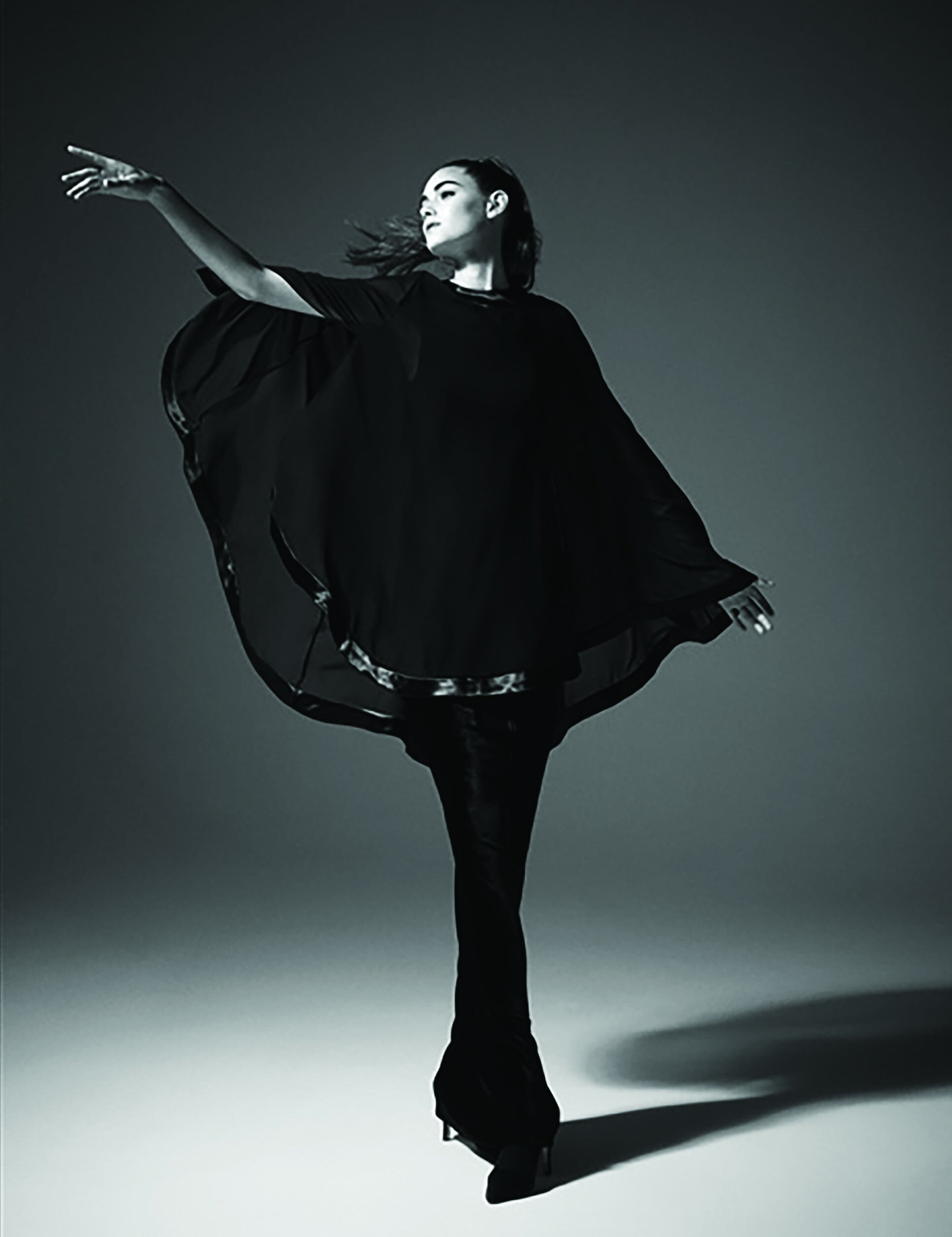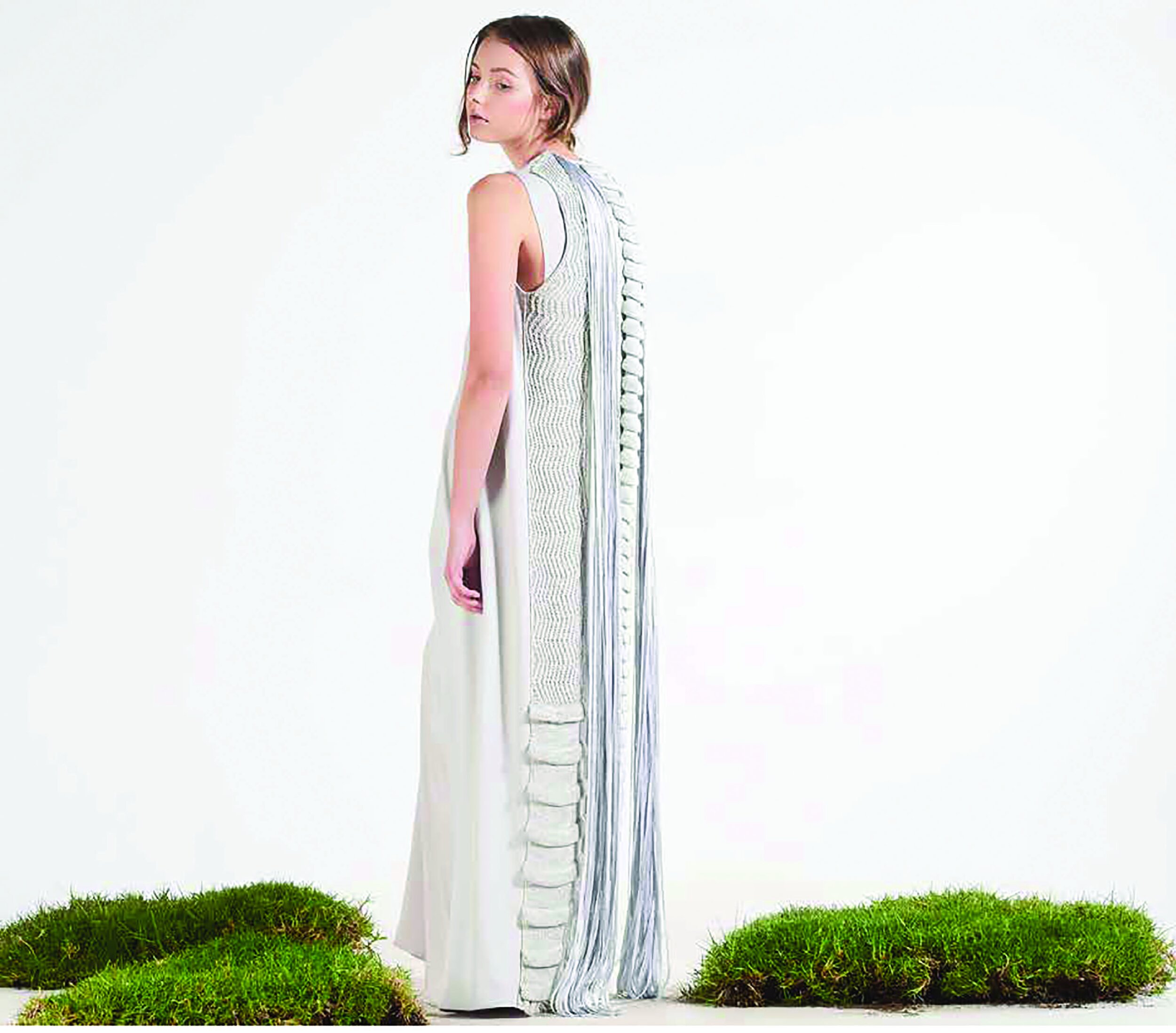



Pablo Ramirez
Listening to a Gardel’s tango is an experience. The gloomy, sentimental, and nostalgic lyrics of the iconic Uruguayan singer captures the soul of Buenos Aires.
Ramírez, who studied garment design, opened his own label in 2000 and nowadays part of the elite of fashion designers in Latin America. With a solid ambition for black and an extreme attention to strong and precise silhouettes, he’s a true representation of the Argentinian culture, just like a Gardel’s song.
Your clothes have a strong presence of black and oversized silhouettes, why?
My love for fashion started when I was a kid, while I learned to draw. It was a very natural process, like learning how to talk. So the silhouettes and lines come from that, from my childhood, my love for drawing. And my passion for black came through the synthesis and pure forms. With black there’s no distractions, your eyes are focused completely on that, on the shape, the silhouette.
You’ve said before that “color is a distraction”, which seems paradoxical since, from an international view, Latin America is normally associated with color. How does the Latin culture influence your work?
I believe that geography shapes the identity of people. Latin America is extensive, there are multiple kinds of weather, landscapes, and there’s a lot of nature. I, for example, grew up in a little town close to the Buenos Aire’s on the “Pampa plain”, close to the Plata river, where everything was gray and melancholic. Also, I had a strong religious education while growing up, the priest and nun’s uniforms influenced my work. All of that is Latin America as well. We can’t generalize and think of it as a party and colorful place.
Why isn’t Latin America’s fashion industry global yet? What’s holding it?
I think we’re a very young continent, where there’s an interesting mixture, where there’s a multitude of rich cultures, big and profound that were oppressed by a European Catholic culture. That made us who we are. I think that Latin America’s fight for defying its identity is still in process. Also, politically, the scenario is complex, that affects deeply our business.
Who’s your favorite Latin designer?
It’s hard to choose one in particular, because of how big and diverse we are. We’ve seen those who conquered fame and glory in Europe or North America. But those who stay here, and work from here are brave and strong as well.
What differentiates Argentina’s fashion from other countries?
Argentina is probably one of the most psychoanalyzed countries in the world! Argentinian fashion can be an exact copy of foreign styles, or something really deep, with a profound message, with a lot of poetry. It is phenomenal and contradictory at the same time.
Why do you think its worthy to work in fashion in Latin America?
I’ve been lucky enough to be invited to participate in international runways like Berlin, Stockholm, Madrid, New York, among others. But I stayed here because of money. I’m an independent designer, who works at a very small scale, in a country that doesn’t support
design. And not a single designer can maintain a business like that without a good income. That’s why I don’t know if its worthy to work here, you know? But I love doing it anyway, and here’s where I was born, plus, I don’t know what I’ve been doing if it wasn’t this. I’ll love to have the chance to grow my business and sell my designs in different countries, perhaps online. I don’t know! Those are all new paths and I prefer to go step by step. Taking big risks like that’s scary.
What’s the biggest sin of a designer?
Trying to be someone different. Going against its own nature, and not listening to its inner voice.
What’s something you wish you knew that nobody told you?
That being a designer means to be exposed as an individual. No one trained me to be that public. I never wanted to be recognized as a public person. I like and enjoy my work to be out there, but not me. Taking pictures, exposing myself, I don’t like that.
Your philosophy of failure?
I don’t really know because, even when it happened to me before, I refused to admit it. “You’ll learn and grow from your mistakes and failures”.
What would you like the world to know about Argentinian’s fashion industry?
First, I’ll love for them to know that we exist! Argentina is more than soccer, meat, tango, mate, polo, or the Patagonia. We have a lot of art, theater, music, design. We work to create products with style and quality. We’re still growing, but there’s a lot to offer.
MULLIER
“It’s a women’s movement” says by Paola Tarazona and Lorena Cuevas, both creative directors of the brand. Mullier, born and raised in Colombia, started with traditional handmade pieces and it’s growing into a luxury business. It has the right amount of Colombian culture and the international experience of both designers. Tarazona and Cuevas, trained in Milan, and the United States, came back to start a brand new concept based on geometry inspired designs and a millenary technique. Each garment produced by the brand is crafted by Colombian women, aspire to inspire and elevate the women’s body.
Mulierr, featured in various publications like Vogue, Women’s Wear Daily, and InFashion, among others, are leading the group of upcoming designers who work with local artisans and aim to generate more opportunities for single mothers. Mulierr is the perfect example of young entrepreneurs and artists, who see in their own countries a growing market, and the best tools to, not only materialize their dreams but incentive the economy throughout fashion. While they continue to spread the brand in the region, Tarazona and Cuevas work to give voice to a forgotten group of women that’s been dedicating their life to preserve throughout generations, a millenarian tradition of the Colombian culture.
What makes you different?
Mullier has a different DNA. We feel each piece we create as a white board that needs to be altered with our embroidery and our handmade tapestry. The way we conceptualize our fabrics create something completely different.
How hard is it to enter the international market? How’s that process been?
We think that the hard part isn’t get into it, or participate in it, the hard part is to have a good product –the perfect product- to export. We started participating in the international fashion scenario two years ago, and we’ve been very welcomed, mostly because we’re proposing something new.
What’s the biggest obstacle or challenge to the Colombian fashion industry in order to get more attention?
Our country right now Is reaching a higher level in the fashion industry, not just in fashion. We’re the center of a political and social change, which always affect the way artist create. In terms of fashion we have more visibility, eyes are on us, in Latin America.
What does Mullier want to show to the world about Colombia?
We want to export our artisan’s work. We want to show the world how the craftsmanship, particular of our culture, can be conceptualized and bring innovation. We want to show the world how a handmade product in Colombia can be a luxurious object.
Favorite latin designer?
Carolina Herrera! She’s unique and her work is one-of-a-kind. Her DNA is always present, and that’s what we appreciate the most.
What about upcoming latin designers?
There’s a lot of brands taking over the industry in the region. But what we like the most is the effort of designers to display what we are, our roots and cultures. That’s very interesting! It’s very gratifying and moving to see that they’re giving our artisans the place they deserve.
Something you wish you knew that nobody told you?
How hard it is to finds people to believe in you, in your own country.
Your philosophy on failure?
We take it as a learning experience. it’s the perfect occasion to reinvent ourselves and move on.
What do you want people to know about you?
That we’re passionate about fashion and art. Our biggest goal is to take Colombian fashion into a deeper level. Each collection has our own skin.






Isabella Martin
Born and raised in Québec, Isabella Martin is, perhaps, one of the social media leaders on fashion illustration. The 26-year-old artist, whose mother is from Honduras, studies fashion design and merchandising in Montreal and has more than seven thousand followers on Instagram.
How did you get into fashion illustration?
I have always been obsessed by fashion and have always liked to draw, but it is only when I quit my job as a fashion designer assistant, moved to Norway and got a lot of time on my hands that I realized that fashion illustration was what I really wanted to do. I just love to create dreamy universes where my characters are enjoying beautiful clothes. I also love the fact that it is something I am passionate about and that I can work all day and night without seeing the time pass.
What inspires your creative process?
Travels inspire me a lot since I am always in the search of some decors that I can incorporate to my illustrations. I also spend a lot of time looking for images that inspire me online, and my most important inspiration are of course the fashion shows and lookbooks. I try to watch the more I can every season, and I am often attracted to graphic prints, clean cuts and pastel colors.
What do you think about fashion illustrators, who is your favorite?
I love to discover different styles and I learn a lot from them. I love the funky universe of Karolina Pawelczyk, the 70’s beauties of Blair Breitenstein and I also admire Kelly Beeman. I have so many favorites I can’t name them all!
Favorite designer to illustrate?
I love how designers are often inspired by art, it always makes me discover a lot about different fields when I read more about their inspirations and it stimulates my own creativity. I also love to see the clothes on people, just walking down the street or having a coffee. It is somewhat an approachable art I can easily relate to – even if most brands I like are out of reach. It is hard to have favorites, my tastes often changes depending on the trends and season, but Delpozo is definitely a constant one! I am mesmerized by the skill and creativity.
What’s your goal for the future?
I would love to be an established fashion illustrator. One other dream of mine is also to have my own ready-to-wear label.
Best thing about fashion illustration?
Sometimes I feel like working more on details and then I always go and rewatch the Dolce & Gabbana shows, but again it is very hard to choose favorites since it really depends on my mood. These days I love to illustrate beaches and gardens, so I am always on the lookout for nice swimwear and lingerie brands, and lingerie brands.








